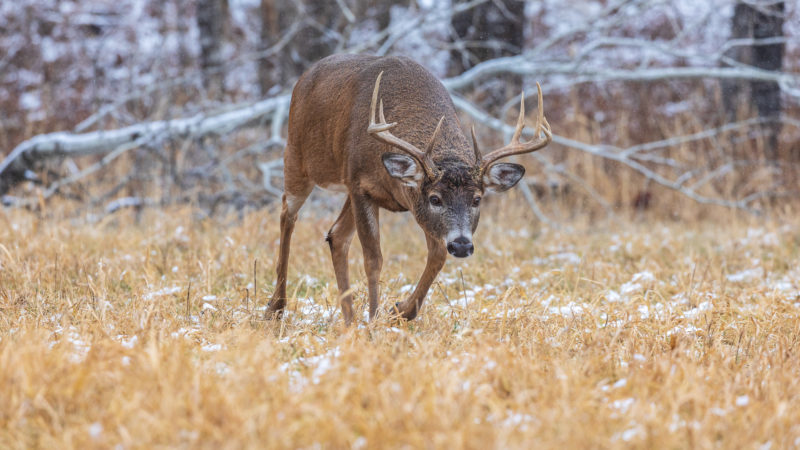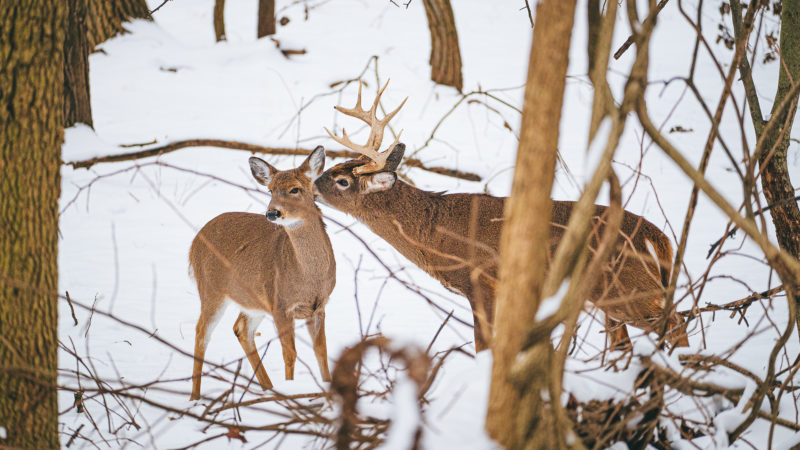The November rut has come and gone leaving only memories – and hopefully freezer meat – behind. But for some deer hunters, the rut is in full swing. That’s right! If you drive far enough south you’ll find that deer in the deep south rut in the months of December and even January.
But the question is, why do deer rut late in the deep south? How is it that some deer can rut in one month, and just a few hours down the road, they rut a month later? For the answer, I reached out to Dr. Steve Demarais of the Mississippi State Deer Lab. He answers the question through some insight on some of the reasons that this regional variation takes place.

North vs. South
Why do things vary so greatly when it comes to the rut in the north versus the south? “Over eons of time, Mother Nature has applied selective pressure on the timing of peak breeding season,” says Demarais.
He continued, “Ultimately, breeding is synchronized so that fawns are born at a time that maximizes their chance of long-term survival. Important considerations include adequate forage to support the energetic demands on the lactating mother. Optimum milk production allows fawns to reach a body size necessary to live through the following winter when deer foods are scarce. This is especially critical in northern environments where surviving severe winters will be a challenge for an undernourished, undersized fawn.”
But how do things differ in the south where cold weather is not as much of an issue? What are the hurdles in the south that deer reproduction naturally has to work around?
“In areas like the Mississippi River basin, birth timing may be governed by events such as spring flooding,” says Demarais. “Does are essentially “forecasting” 200 days in advance (on average) when to have their fawns during optimal forage availability and weather.”
Basically, timing of fawn birth is a product of a deer herd’s ability to adapt to a specific region where they live.

“Breeding in the South can be much less synchronous because they don’t have the same level of environmental forces that restrict when fawns can be born and survive the winter,” says Demarais. “In other words, because of the mild southern winters and availability of forage throughout the fall, there’s a much wider window of days that fawns can be born and survive. Lack of this adaptive pressure allows southern populations to have more variation in the length or duration of the rut.”
Reasons for a December & January Rut
Even within the South, there are several variations in the peak breeding season for deer. Why is that? Demarais says that one theory is that genetic patterns remain from the whitetail restoration era of the mid-1900s, when thousands of deer were moved from all over the U.S. and Mexico to repopulate areas in the South where deer were absent.
“Most of these source locations had differing breeding seasons,” says Demarais. “For example, deer from both Wisconsin and Mexico were used during restoration, which have very different breeding seasons. Other theories include environmental factors such as flooding patterns, blood-feeding parasites, and rainfall and its impact on nutrition. One thing is for sure, the wide range of breeding dates among regions of the South show that the environmental forces, which restrict the range of breeding dates in the North, aren’t present in the South.”
So if you’re a hunter looking to chase the rut beyond the month of November, look a little further into the deep south states. Regardless of the variables for why this activity happens late, these southern states will consistently experience rutting whitetail opportunities in December, January, and even February. It’s a great way to extend your rut hunting opportunities in the months ahead.
Listen to Dr. Bronson Strickland, of the MSU Deer Lab, talk about reasons for the late rut in the Deep South in the podcast below.

 By
By 



